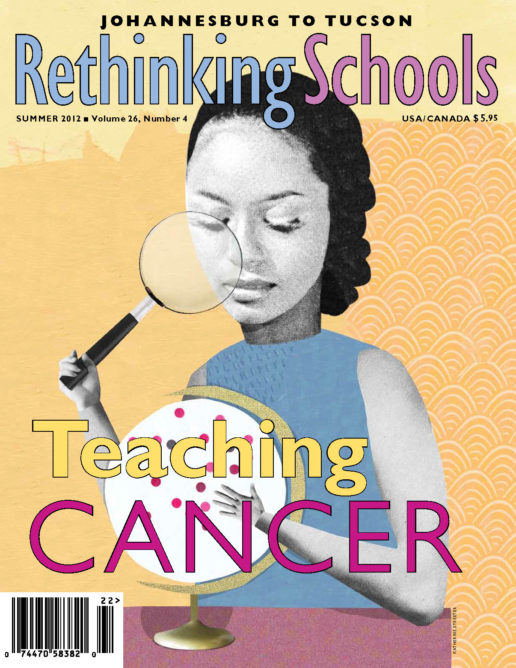Preview of Article:
King Corn
Teaching the food crisis
Illustrator: David McLimans
“All right, folks, we’re going to start today by breaking the rule about eating in class. I’d like you to take all of your snacks, drinks, gum, mints, and any other food in your backpacks and pile it up on your desk. If you don’t have any food with you today, borrow something from a neighbor. Start reading through the ingredients and looking for corn. How much corn do you think we have in the room today? Any guesses?”
I have the good fortune of planning my 9th-grade global studies curriculum with my colleague Julie O’Neill. We decided to start class with this “food from your backpack” activity as an introduction to the documentary film King Corn. Recent advertising campaigns against high-fructose corn syrup have helped to make some students more aware of how pervasively that ingredient is used in processed foods, but we were hoping to show just how “creative” industrial food producers have been at incorporating America’s largest crop into the snack food that students eat every day.
We projected a list of commonly included ingredients that are likely to be made from corn (including such unlikely suspects as caramel, dextrose, sorbitol, food starch, and xanthan gum), and then asked students to guess what percentage of their foods were made of corn. Although the accuracy of their estimates was questionable (ranging from zero to 90 percent), the exercise gave students a way to immediately connect to the film, which opens with the two filmmakers undergoing isotopic hair analysis to see how much corn they are made of. When Curt Ellis and Ian Cheney are told by Stephen Macko, University of Virginia professor of environmental science, that more than 50 percent of the carbon atoms in their bodies are composed of corn, our students seemed to share the shock that Ellis and Cheney display in the film.
Our goals in showing the film extended beyond raising awareness about the foods that our students eat. Our food curriculum focuses on “choice”: the extent to which we do or don’t have true choices about the food we eat, and what that means for people and the environment. In part, we want to confront the narrative of the all-powerful consumer that looms so large in American culture: the idea that we are all in control of our diets, health, and happiness through the decisions we make in the marketplace. Without stripping power and agency from students, we want to show that most of us don’t have as much choice as we perceive about the food that we eat. This is especially important when we talk with students about solutions to the social and environmental problems we discuss over the course of our food unit—their natural first reaction is often to focus on making better individual food choices.
In fact, for the last six years, I’ve created units on the politics of food for almost every social studies class I’ve taught—from world history to economics—and I’ve started each unit by asking students to think and write about this question of choice. In the discussions that follow, we’ve bounced from the inevitable critiques of school food to differing perspectives on how families shop, cook, and eat at home.

